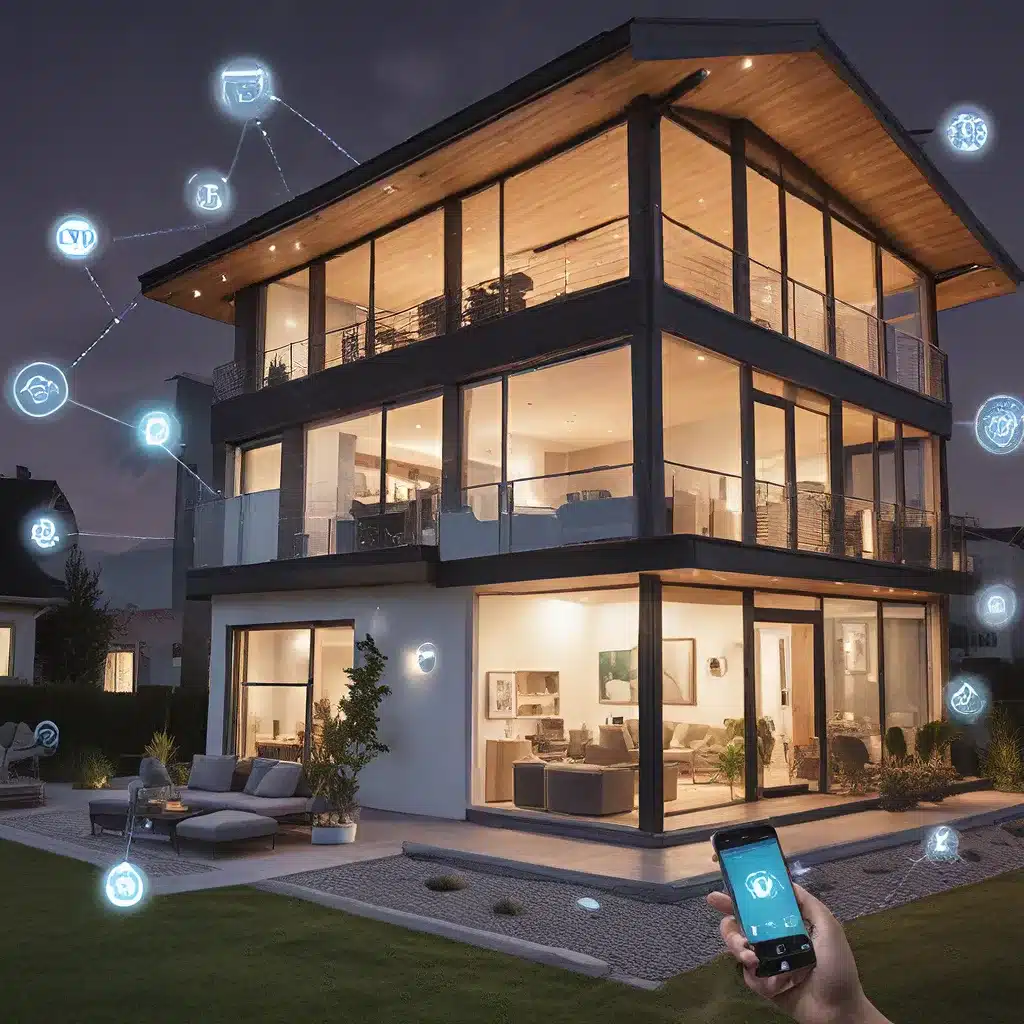
In the ever-evolving landscape of technology, the smart home revolution has emerged as a game-changer, transforming the way we interact with and manage our living spaces. At the heart of this transformation lies the power of sensor networks and the Internet of Things (IoT). By integrating a diverse array of sensors into our homes, we can unlock a new era of comfort, efficiency, and safety, all while harnessing the vast potential of data-driven insights.
The Rise of Sensor-Enabled Smart Homes
As the smart home concept continues to gain traction, the integration of sensors has become a crucial enabler, connecting various aspects of our homes to create a seamless, intelligent ecosystem. These sensors, strategically placed throughout the residence, collect a wealth of real-time data on temperature, humidity, lighting, air quality, energy consumption, and even occupancy patterns.
Smart home technology leverages this data-driven intelligence to automate and optimize a wide range of home functions, from climate control and energy management to security and home assistance. By integrating these sensors with IoT-enabled devices and cloud-based platforms, homeowners can enjoy enhanced convenience, energy savings, and peace of mind.
Enhancing Comfort and Convenience
One of the primary benefits of sensor-enabled smart homes is the ability to tailor the living environment to individual preferences. Sensors monitoring temperature, humidity, and lighting can automatically adjust these parameters to maintain optimal comfort levels, ensuring a personalized and energy-efficient experience.
Advanced HVAC systems, for instance, can utilize occupancy sensors to detect when rooms are in use and adjust the temperature and airflow accordingly. This not only enhances comfort but also reduces energy consumption, contributing to cost savings and environmental sustainability.
Similarly, lighting sensors can detect natural daylight levels and automatically adjust artificial lighting to maintain the desired ambiance and energy efficiency. This seamless integration of sensors and smart devices allows homeowners to effortlessly create the perfect living environment, tailored to their preferences and needs.
Optimizing Energy Efficiency
The integration of sensor networks in smart homes extends beyond comfort and convenience, playing a crucial role in energy management and conservation. By monitoring energy consumption patterns, sensors can provide real-time data and insights to homeowners, empowering them to make informed decisions about their energy usage.
Smart home sensors can track the energy consumption of individual appliances, HVAC systems, and other household devices, allowing homeowners to identify areas of high energy usage and implement targeted efficiency measures. This data-driven approach enables proactive energy management, ensuring that resources are optimized and wasteful consumption is minimized.
Moreover, sensor-enabled smart homes can integrate with renewable energy sources, such as solar panels and wind turbines, to monitor and optimize the energy generation and storage within the home. By leveraging this synergy between sensors and renewable energy, homeowners can maximize their energy self-sufficiency and reduce their carbon footprint.
Enhancing Safety and Security
Beyond comfort and energy efficiency, sensor networks in smart homes play a vital role in enhancing safety and security. Strategically placed motion sensors, smoke detectors, and water leak sensors can detect potential threats and trigger appropriate responses, providing homeowners with real-time alerts and automated actions.
For instance, smoke detectors can instantly alert homeowners and dispatch emergency services in the event of a fire, while water leak sensors can shut off the water supply to mitigate the risk of flooding and water damage. Motion sensors, on the other hand, can integrate with smart locks and security cameras to deter intruders and provide comprehensive home monitoring.
By leveraging the interconnectivity of sensors and IoT-enabled devices, smart homes can create robust security systems that safeguard both the physical and digital aspects of the home. This enhanced safety and security not only provides peace of mind for homeowners but also protects their valuable assets and personal information.
Challenges and Considerations
While the benefits of sensor-enabled smart homes are undeniable, there are also challenges and considerations that homeowners and technology providers must address. Cybersecurity and data privacy are paramount concerns, as the integration of connected devices and sensor networks can expose homes to potential cyber threats.
To mitigate these risks, it is essential to implement robust security protocols, regularly update firmware, and educate homeowners on best practices for securing their smart home systems. Additionally, homeowners should be mindful of the data being collected by sensors and ensure that privacy policies are transparent and adhered to.
Another challenge lies in the interoperability of smart home devices and sensors. As the IoT ecosystem continues to expand, seamless integration and communication between various brands and platforms become crucial for a truly unified smart home experience. Industry standards and open protocols can help address this challenge and provide a cohesive smart home environment.
The Future of Sensor-Enabled Smart Homes
As the smart home revolution continues to evolve, the role of sensor networks and IoT will only become more prominent. Advancements in sensor technology, artificial intelligence, and machine learning will enable increasingly sophisticated and personalized smart home experiences.
Emerging trends in smart home technology include voice-controlled assistants, predictive maintenance, and integrated health monitoring. These developments will further enhance convenience, energy efficiency, and overall well-being for homeowners.
Moreover, the integration of renewable energy sources and energy storage solutions will play a crucial role in transforming smart homes into self-sustaining and eco-friendly living spaces. As the global focus on sustainability intensifies, sensor-enabled smart homes will be at the forefront of reducing carbon footprints and promoting environmental stewardship.
By embracing the power of sensor networks and IoT, homeowners can unlock a new era of comfort, convenience, and security in their living spaces. As the technology continues to evolve, the future of smart homes holds immense promise, transforming the way we interact with and manage our domestic environments.
Visit sensor-networks.org to explore more insights and resources on the cutting edge of sensor network technologies and IoT applications.